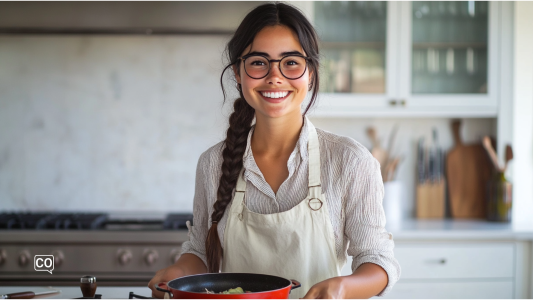Spanish A1.33.2 Breakfast for Valentine's Day Share Copied!
This story describes a breakfast prepared for Valentine's Day, using cooking vocabulary.
Cuento corto: Desayuno para San Valentín
Esta historia describe un desayuno preparado para San Valentín, utilizando vocabulario de cocina.

A1 Spanish
Level: A1
Module 5: En casa (At home)
Lesson 33: Vajilla (Tableware)
Teaching guidelines +/- 15 minutes
Audio and video
Text and translation
| 1. | Juan organiza un desayuno para el Día de San Valentín. | Juan organizes a breakfast for Valentine's Day. |
| 2. | En la mesa pone un mantel y unas servilletas. | On the table, he places a tablecloth and some napkins. |
| 3. | Lleva dos tazas, platos y cucharas para el café. | He brings two cups, plates, and spoons for the coffee. |
| 4. | En la sartén, cocina huevos y prepara tostadas. | In the pan, he cooks eggs and makes toast. |
| 5. | También corta frutas en un bol y pone flores en una jarra. | He also cuts fruit in a bowl and puts flowers in a jug. |
| 6. | Prepara todo con mucho amor y cariño. | He prepares everything with a lot of love and care. |
| 7. | Cuando su pareja llega está muy feliz. | When his partner arrives, he is very happy. |
| 8. | Comen el desayuno y celebran el día. | They eat breakfast and celebrate the day. |
Exercise 1: Discussion questions
Instruction: Discuss the questions after listening to the audio or reading through the text.
- ¿Qué prepara Juan para el desayuno?
- ¿Qué pone en la mesa?
- ¿Cómo se celebra el Día de San Valentín en tu país?
Exercise 2:
Instruction: Fill in the correct word.
un bol, tazas, un mantel, la sartén
